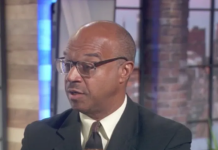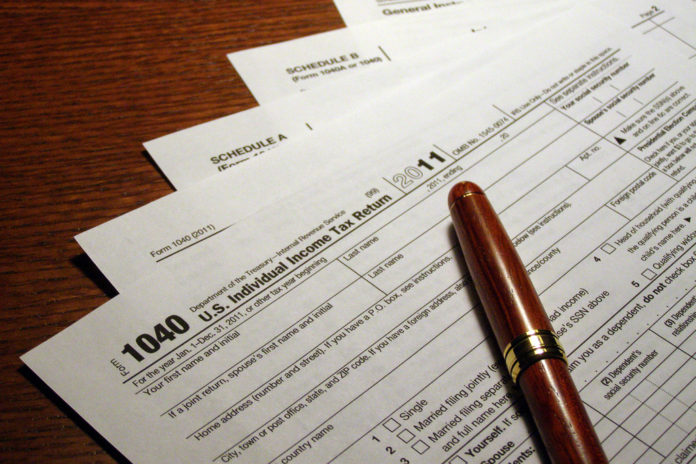(Updated to reflect final action on tax bill with more details of the debate)
The Kansas Legislature sent a new tax bill to Gov. Laura Kelly, a little more than a day after the lawmakers appeared to be at an impasse on reaching a deal on tax cuts before the regular session came to an end.
In the early morning hours of Saturday, the Senate and House approved a new plan that lawmakers cobbled together more than seven hours earlier on Friday.
The House approved the bill unanimously. It was approved on a 24-9 vote in the Senate.
The vote was marked by how most Democrats in the Senate opposed the plan – two were present and passed – while those in House supported the plan.
The new plan – the fifth considered by the Legislature this year – would cost about $1.56 billion over three years and would move the state to a two-tier structure with the bottom bracket eliminated.
The new bill lowers income tax rates, increases the personal exemption, eliminates state income taxes on Social Security, accelerates elimination of the sales tax on food and increases the standard deduction.
Will Lawrence, chief of staff for Gov. Laura Kelly, said the cost of the latest plan is above the threshold of how much the governor wants to spend on tax cuts.
The governor has tried to keep tax cuts capped at about $425 million a year and with other bills cutting taxes still circulating, total cuts could exceed $500 million, Lawrence said.
The governor has already vetoed two other tax plans that the Republicans couldn’t override. Both would have moved the state to a single tax rate advocated by Republicans.
Dinah Sykes, the top Democrat in the Senate, predicted Kelly would veto the new plan as well.
Sykes said she may be accused of opposing tax cuts, but said she wants something that could be carried out in a fiscally responsible way.
“I will tell you I want something that is sustainable and is not going to rip the rug out from under people and that’s what this is going to do,” Sykes said.
Senate President Ty Masterson conceded that the latest tax plan was not ideal but supported the new plan.
“We’re making a deal that everybody can get behind,” Masterson said. “This plan is a compromise, it’s fair and it’s time.”
A profile prepared by the Division of Budget showed that the state would be about $392 million in the red by 2029 under the newly minted tax plan.
However, the state would still have a rainy day fund approaching $2 billion.
Democratic state Sen. Ethan Corson of Fairway wanted to know how the state plans to fund critical taxpayer services while facing shrinking revenues.
“I am just looking for somebody to show a little bit of leadership and just walk through again what the plan is,” Corson said.
“What do we want to do when it comes to funding education?
“What do we want to do when it comes to funding the transportation program?
“What do we want to do when it comes to infrastructure funding?”
The new tax plan emerged with lawmakers scurrying behind the scenes to consummate a deal despite signals that they didn’t plan to even meet Friday to discuss a new tax plan after the House sunk a plan on Thursday that legislators said didn’t go far enough.
The House rejected a compromise plan in favor of one that it passed unanimously that many from both parties in the chamber believed went deeper and did more for less affluent taxpayers.
“I didn’t want to leave without getting something done,” said Republican state Rep. Adam Smith, chair of the House tax committee and lead tax negotiator.
“I think everybody was having conversations with everybody. It was kind of a chaotic day,” Smith said.
House and Senate negotiators laid out a plan that would move the state to a dual-tiered structure with income tax rates of 5.55% and 5.15%. Those rates are now set at 5.7% and 5.25%. The lowest bracket would be eliminated.
The income threshold for the 5.15% tax bracket would change to earnings up to $23,000 for single filers and $46,000 for joint filers. The threshold for the lowest bracket in Kansas is now $15,000 for single filers and $30,000 for joint filers.
The new plan still eliminates the income tax on Social Security benefits and accelerates the elimination of the food sales tax to July 1.
It also increases the residential exemption on the state’s 20-mill property tax rate from about $42,000 to $100,000. It lowers the property tax rate to 19.5 mills.
The new plan increases the state’s personal tax exemption for single filers to $9,160 from the current level of $2,250 person. For joint filers, the exemption would increase to $18,320. The exemption would be $2,320 for dependents.
Fiscal analysts said while it may appear on paper that the new plan would increase taxes, significant increases in the personal tax exemption ensure there will be a cut.
The plan also calls for a 3% increase in the standard deduction. It would increase the standard deduction to $3,605 for single filers, $8,240 married joint filers and $6,180 for head of household.
“I believe this is a tax bill we should be proud to support,” said Democratic state Rep. Tom Sawyer, the ranking member on the House tax committee.
“It provides broad property tax relief, sales tax relief and income tax relief to all Kansans,” he said.
House Speaker Dan Hawkins said “everybody can hold their head up high and go home and know that they’ve done the work of the people of Kansas.”
The House and the Senate came together on a new plan a day after the House rejected a plan that Kelly said she would have signed partly because it kept the state’s current three-rate structure intact and that she says was fiscally responsible.
The new plan is estimated to cost about $1.55 billion over three years, but the first year is front-loaded by about $64 million because of the elimination of the food sales tax.
After the first year when the cost of the plan is projected at about $628 million in 2025, the cost tapers off in the out years to about $458 million in 2026, $462 million in 2027 and $465 million in 2028, according to a fiscal analysis.
Kelly told House Democrats in a caucus on Thursday that she was trying to keep the cost of the tax plan to about $425 million a year, although she supported a failed compromise plan that cost about $430 million a year.
Discounting the first year, the plan passed unanimously by the House was projected to cost about $1.45 billion from 2026 to 2028. The plan the House rejected was projected over those three years to cost about $1.38 billion.
Alan Cobb, president and CEO of the Kansas Chamber, suggest the Legislature could still do more to ease the tax burden in Kansas.
This is a good first step that sets a foundation that could propel our state to economic growth and help to make us more competitive,” Cobb said in a statement.
“But we must do better. Even with this tax cut, Kansas is still a competitive outlier when compared to the other states in our region.”















